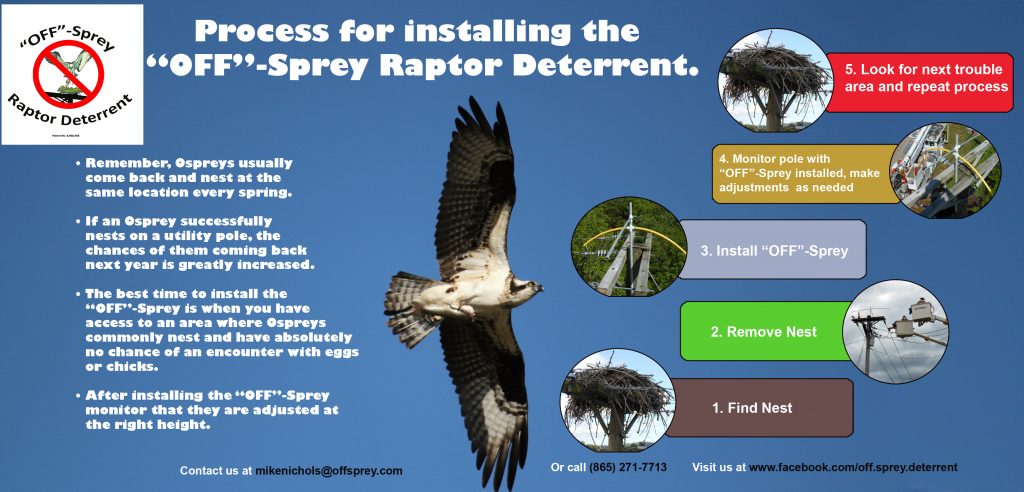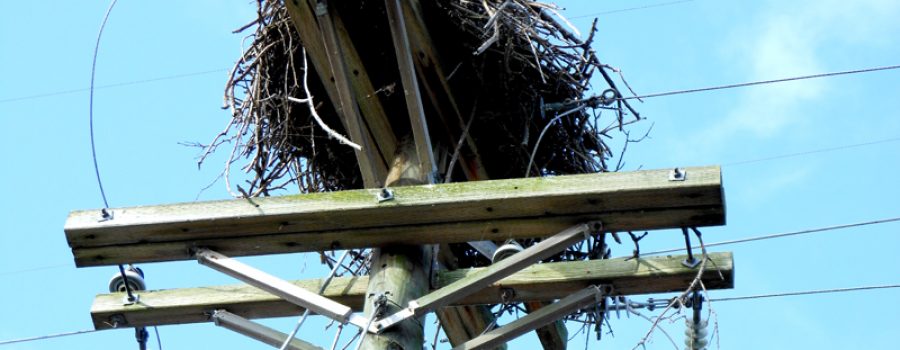Their success means increased responsibility now that the nesting season has heated up, many Osprey lovers and utility companies are trying to keep them from building nests on utility structures. In our last article, we discussed the many deterrents that can be used and explained why sometimes they work and sometimes they don’t. It is good to see different organizations such as Boy Scout troops volunteering to help out by building man-made structures for the Osprey to nest on, but to an old stubborn Osprey, that won’t always work.
Thanks to great conservation efforts, and the utility companies working alongside bird lovers and wildlife officials to help keep them safe, Ospreys are thriving these days. This ultimately poses a problem for both the Ospreys and the utility companies. The more Ospreys are safe, the more they will increase in numbers and the more work it takes to try and keep them from building nests where it is dangerous for both the birds and the utility companies.
Older mature Ospreys use the same nesting site every year and will continue to add material to the original nest. A nest that had not previously been a hazard can quickly become a danger to both the birds and Utility structures as its size increases. The amount of debris that can fall and the increased overhang from the expanded nests can come in contact with energized electrical components and cause fires or electrocution of the Ospreys.
Putting up man-made structures is a great idea and works the first time sometimes, however, if you go up against a stubborn old Osprey, the task doesn’t always work. What needs to happen is that you force them to search out natural or man-made nesting sites. To do that, you need to install something that makes them give up on the pole or other structure and go to the structure you have built.
At the same time you build the man-made nesting site, you need to install the “OFF”-Sprey Raptor Deterrent on the structure that you want them to vacate. Since we began installing the “OFF”-Sprey, we have not had one bird able to rebuild on the structure that it was installed on. The key is, to make sure that the device is installed correctly, and until it is, there are chances that the bird will re-occupy that structure and try to resume the nest building efforts. So it is important that once it is installed, that you continue to inspect the structure daily to see how well it is working and to make adjustments as needed until the Osprey finally moves on.
This can take a day or take a week, but once you have it installed correctly, you can be assured that the bird will move on and both the structure and the bird will be safe.
With the numbers of the Osprey increasing each year with successful hatchings, the chances are you will have more coming back to the same general area they were born, each year trying to start their own family and therefore increasing the chances of injured birds and damaged structures. Those damaged structures, can cost thousands of dollars in equipment, manpower and lost power to customers, not to mention the cost of fines for Ospreys being injured or killed.
The best combination is, to build a man-made structure and install the “OFF”-Sprey to force them to use alternate nesting structures. It is a WIN-WIN for all.



